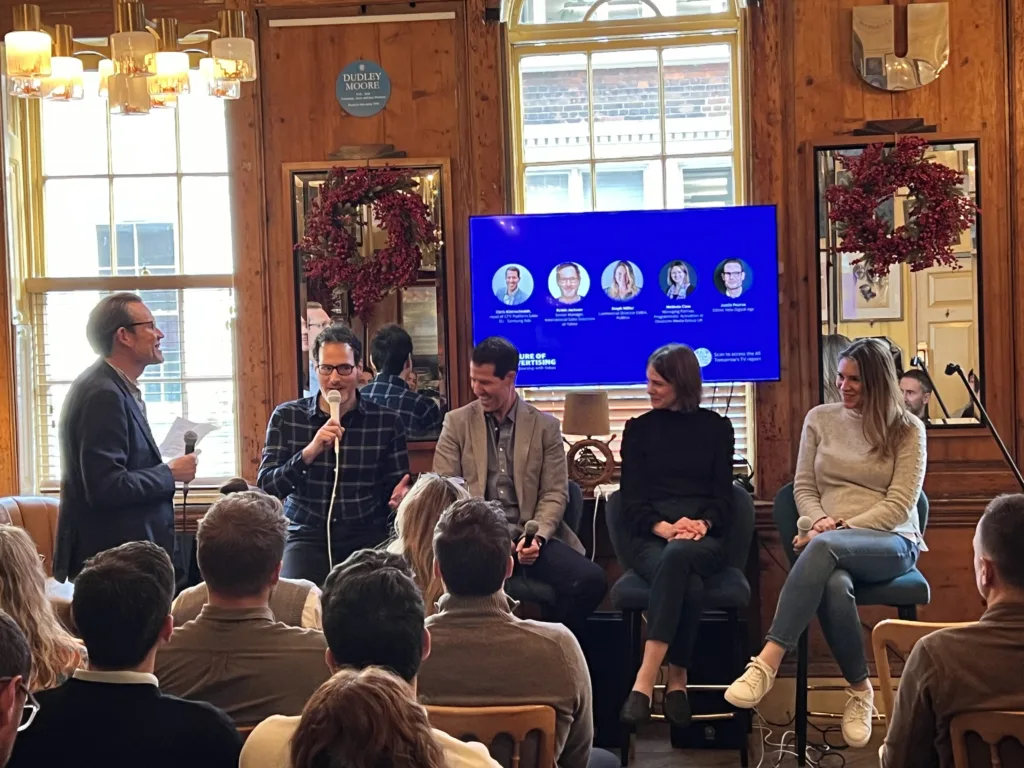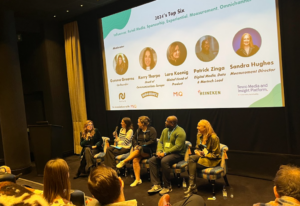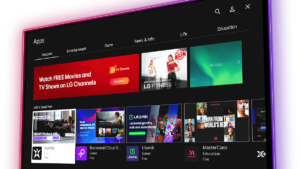Connected TV is a tantalising prospect for marketers – all the reach and brand building of linear TV, with all the tracking and targeting potential of digital. It’s unsurprising that, in the latest report from NDA in partnership with Yahoo, All Tomorrow’s TV, 87% of digital advertising’s most influential figures plan to increase their investment in the channel over the next year.
At a recent industry panel hosted by NDA and Yahoo, experts met to discuss The Future of CTV Advertising. After an opening fireside chat with Rahman Mohammed, Yahoo’s Head of Programmatic, to Yahoo’s focus on CTV as a key advertising medium, we sat down our leading figures to discuss potential, consent, automatic content recognition (ACR), siloes and more.
There’s no question that the industry is excited about CTV’s potential and prepared to go full steam ahead into exploring the possibilities. Robin Jackson, Senior Manager, International Sales Solutions at Yahoo noted: “The targeting and measurement possibilities are so much more than we’ve had before,” while Chris Kleinschmidt, Head of CTV Platform Sales, EU, Samsung Ads, added: “CTV is going to be so widespread over the next couple of years, it’s not even a question.”
However, that excitement has to be tempered with pragmatism. All panellists recognised that clients are moving at different speeds, not all of whom can take advantage of the channel’s full potential quite yet. “There are challenges. Not every client can get their data into clean rooms. It’s not easy to activate these things, privacy and consent. You have to be prepared to do a lot of work with clients,” warns Melinda Clow, Managing Partner, Programmatic Activation, Omnicom Media Group UK
.It pays to manage expectations, says Steph Miller, Commercial Director EMEA, Publica: “Programmatic happened slowly, people dipping their toe in the water. People are now coming in [to CTV] and expecting it all and it’s not quite there.”
Consent is going to be critical, partly due to the sheer volume of data CTV will involve and partly because the issue of tracking consumers is always a hot potato. Clow notes “We’re steering away from following users around, we have to be cautious in that area. We don’t want to fall down the trap of legacy display.”
Kleinschmidt suggests that consent is a consideration, but not necessarily a hurdle: “The growth of CTV isn’t being held back by privacy, but it’s very much in the hands of privacy teams.”
Access to data, particularly automatic content recognition (ACR) is CTV’s ace in the hole. It joins the dots across ‘big screen viewing’ that hasn’t been possible – other than via BARB – in the past. : “ACR is hugely important because when you know what content households are watching, that should inform your CTV strategy. It provides the bridge between linear and digital. It helps you target hard to reach audiences and understand what deals are driving cost-effective incremental reach,” Jackson states.
Again, this is the ideal but many advertisers’ structural realities may get in the way. Clow points out that measurement has to work on joining up their disparate datasets, while in agencies teams can be organised by linear and broadcast VOD versus streaming and digital – “that should be one team”.
In a way, the industry organising itself according to the way consumers consume media, rather than the way suppliers deliver it, is long overdue, not just for CTV. “People are just watching the show they want to see. TV is the biggest screen in the house. The pipes don’t really matter. It’s the publishers, OEMs and broadcasters’ job to make inventory available and sell it in the most effective way,” Miller insists.
Ultimately, advertisers are going into CTV looking for many of the same things they get from linear – attention, quality content and consumer safeguards. These are largely already there but Miller also notes there can be some reticence. “It is on the publishers to make sure they’re using technology that safeguards brands and makes people comfortable working with them. Don’t be fobbed off by someone saying ‘it’s not possible in CTV’. Yes, it is.”
CTV is going to explode into 2024 and beyond but everyone involved has to be mindful of not trying to run before they can walk. Without all the elements in place – consent, data, organisational structure, measurement – the panel believes we run the risk of repeating the same mistakes in typical programmatic.
The ability of CTV to slot into and enhance omnichannel marketing is undoubted. It’s just a question of ironing out those kinks. What is premium inventory if we’re catering to niche tastes? How do we measure CTV efficacy if our tools currently aren’t fit for purpose? And where does budget come from if we’re now adding another mouth to feed at the media mix table? From the panel, it was clear that there are still questions to be answered, but solutions are coming thick and fast.









